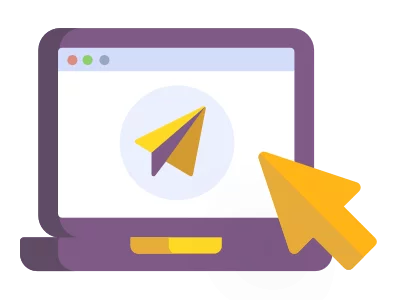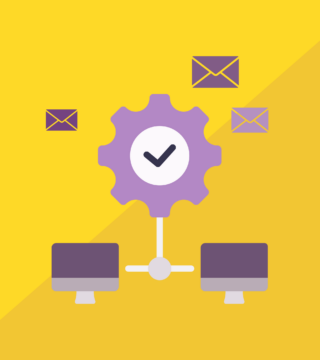Marketing Automation: What it is and everything you need to start a campaign
the 22 of August of 2024
the 22/08/2024
Today, marketing automation has become an essential tool for companies looking to optimize their marketing strategies. This approach allows businesses to automate repetitive tasks, manage campaigns more efficiently, and personalize the customer experience. According to a study by HubSpot, 76% of companies see a return on investment in less than a year. Due to its growing success, in this article, we will explore everything about marketing automation: what it is, how it works, and how to start a campaign.
TABLE OF CONTENTS
Marketing Automation: What it is and how it works
Marketing automation refers to a methodology that involves the use of software and technology to automate repetitive digital marketing tasks. Thanks to these tools, companies can efficiently manage their marketing campaigns, personalize communication with customers, and measure the impact of their efforts.
The operation of this tool is based on the collection and analysis of customer behavior data. With the obtained information, automated workflows are created to send specific messages to customers based on the actions they have previously taken. For example, if a user visits a product page but does not make a purchase, the system can send an email reminding them of the product and offering a discount.
How to start a marketing automation campaign
Starting a marketing automation campaign may seem like a daunting task. However, by following these key steps, you can ensure that your campaign is successful:
- Define Objectives and Goals: Before starting, it is crucial to determine what you want to achieve with the campaign: increase sales, generate leads, or improve customer retention. Clear objectives will guide future decisions.
- Identify the Target Audience: Knowing your audience is essential, with data such as demographics, interests, and behavior. Define who your ideal customers are and what they need.
- Select a Marketing Automation Platform: There are many tools available; study their features and choose the one that best fits your needs.
- Create a Contact Database: Gather information from your potential and current customers to communicate with them effectively.
- Segment the Audience: Divide your contact list into segments based on relevant criteria, such as purchasing behavior, interests, age, etc.
- Design Workflows and Automations: Plan automated action sequences that will be triggered in response to customer interactions.
- Create Relevant and Personalized Content: Ensure that your message content is engaging and tailored to each segment of your audience.
- Set Up Automated Emails: Design and schedule emails that will be sent automatically in response to specific customer actions, such as making a purchase or leaving a product in the shopping cart.
- Implement Forms and Landing Pages: Use these elements to capture contact information and offer valuable content to your customers.
- Integrate CRM and Other Tools: Connect your marketing automation platform with your CRM and other tools to ensure a consistent data flow.
- Establish Tracking and Evaluation Criteria: Define which key performance indicators (KPIs) you will use to measure the success of your campaign.
- Conduct A/B Testing: Experiment with different versions of your messages and designs to determine which works best. For example, try changing the subject line or body of the email in email marketing.
- Launch the Campaign: Once everything is set up and tested, it’s time to launch your campaign and start automating your marketing processes.
- Monitor and Analyze Results: Closely review your campaign’s performance using reports and analytics to identify areas for improvement.
- Optimize and Adjust Strategies Based on Performance: Use the insights gained to continuously adjust and improve your campaigns.
Examples of marketing automation actions
Marketing automation enhances the customer experience and increases conversions. Some examples you can apply to your business include:
- Automated Welcome for New Subscribers: Send an immediate welcome message to users who have just completed their registration.
- Abandoned Cart Reminders: Notify customers who have left products in their cart without completing the purchase to encourage them to buy.
- Birthday and Anniversary Campaigns: Send special offers on customers’ birthdays or anniversaries.
- Personalized Offers Based on Purchase History: Provide relevant promotions based on previous purchases.
- Post-Purchase Follow-Up: Thank your customers for their purchase and offer additional support after a purchase.
- Re-engagement Campaigns for Inactive Customers: Incentivize customers who have not interacted with the brand recently.
- Subscription Renewal Notifications: Remind users when their subscriptions are about to expire.
- Order and Shipping Confirmations: Inform customers about the status of their orders.
- Automated Cross-Selling and Up-Selling: Suggest additional or complementary products based on the current purchase.
- Personalized Product Recommendations Based on User Behavior and Preferences.
- Content Download Follow-Up: Contact users who have downloaded content to offer more information or products.
- Event and Webinar Reminders: Notify users about important events and webinars to which they have registered.
- Post-Service Satisfaction Surveys: Request feedback after an interaction with the customer after a service or purchase.
- Lead Nurturing Workflows: Guide leads through the sales funnel with relevant content.
- Price or Product Availability Change Notifications: Inform customers about important changes in products they have purchased or are interested in.
In conclusion, after learning all about marketing automation—what it is, how it works, and how to start a campaign—don’t hesitate to implement this strategy in your business. This tool not only optimizes marketing processes but also provides a more personalized and efficient way to interact with customers.






















